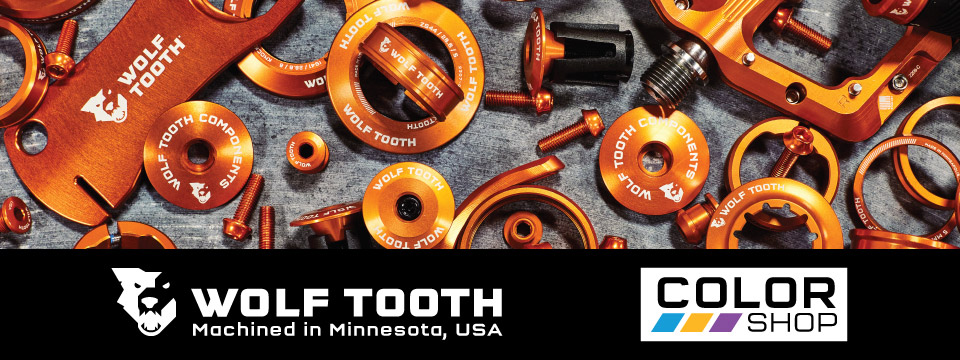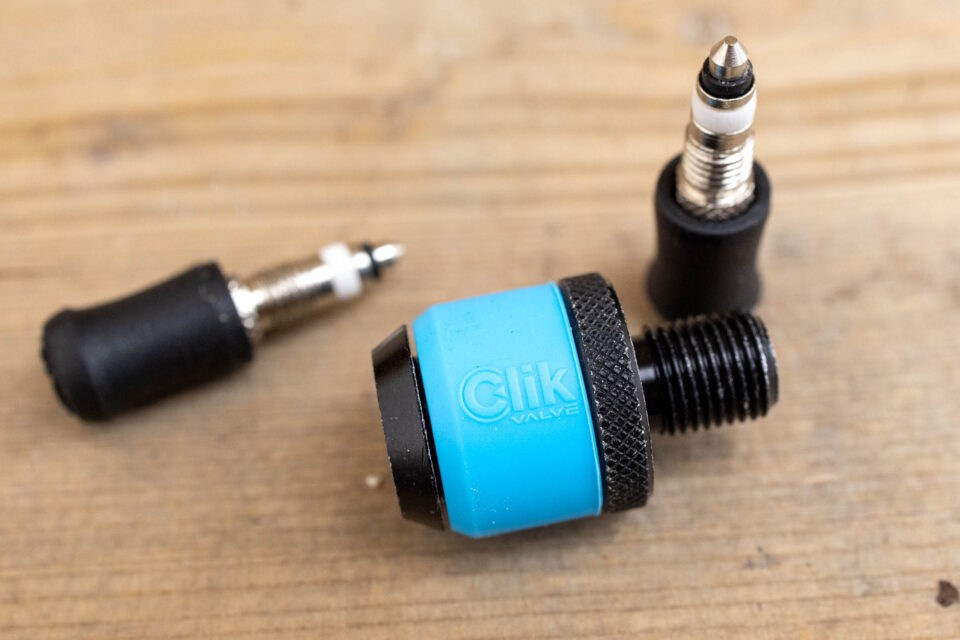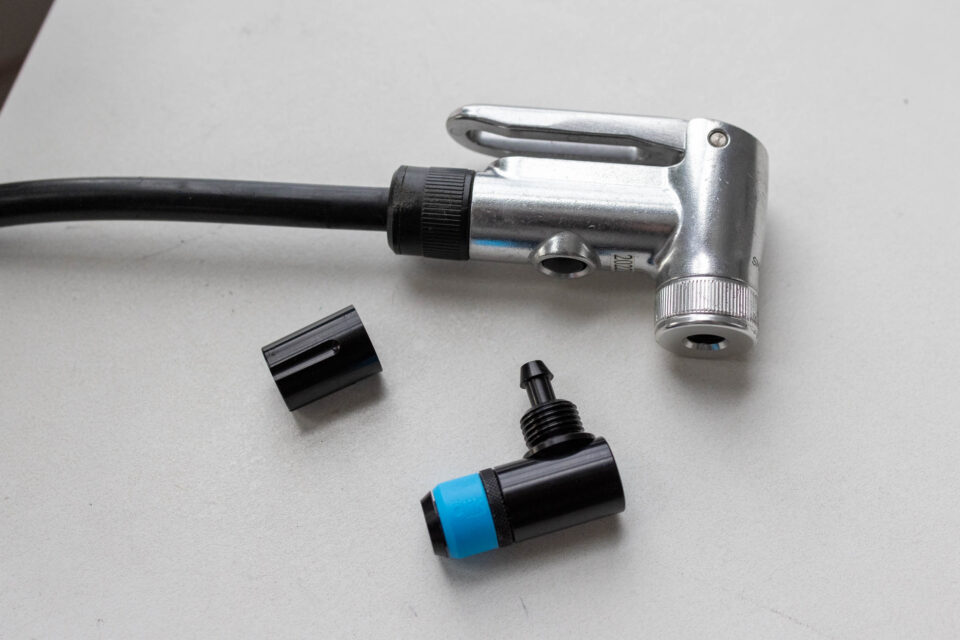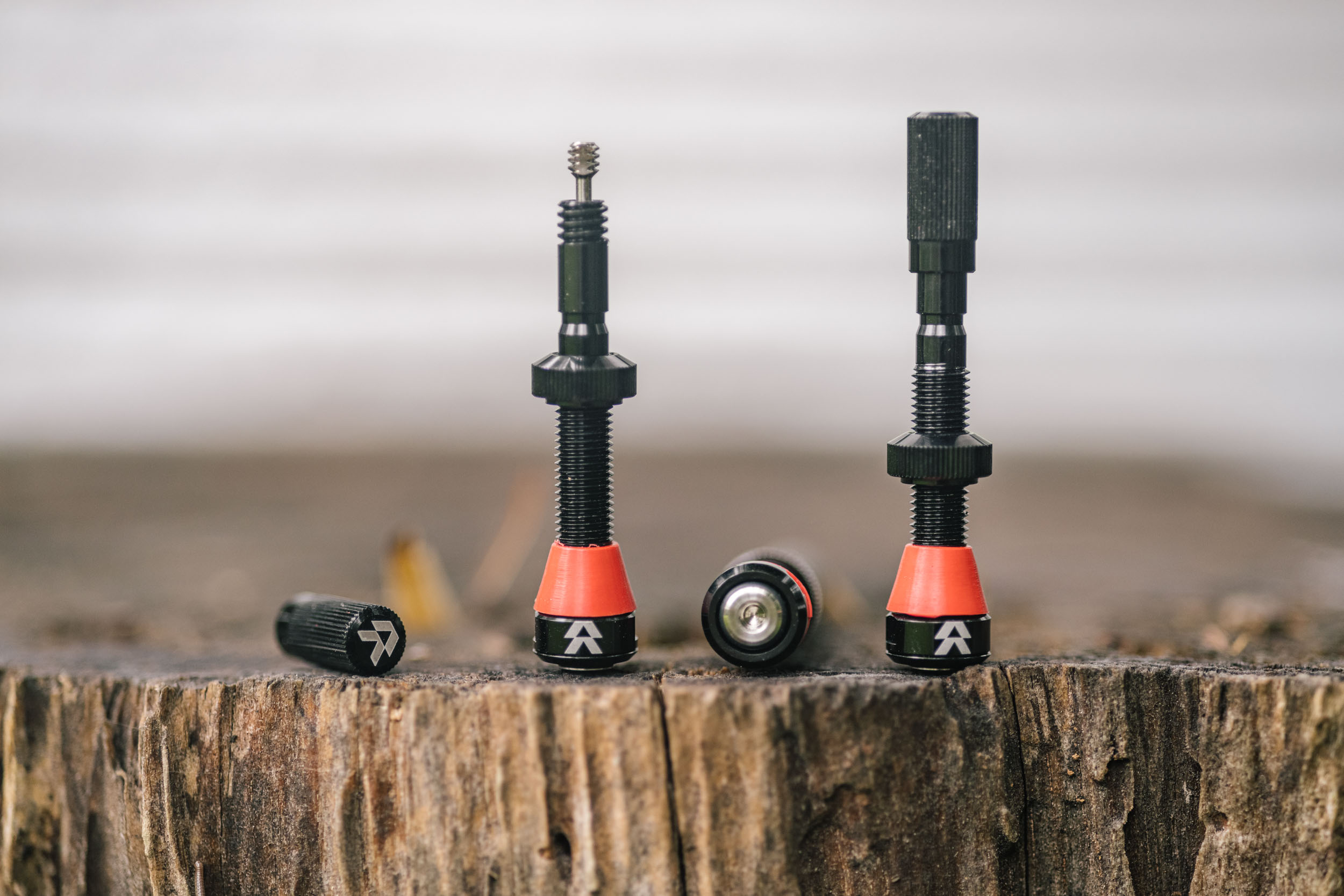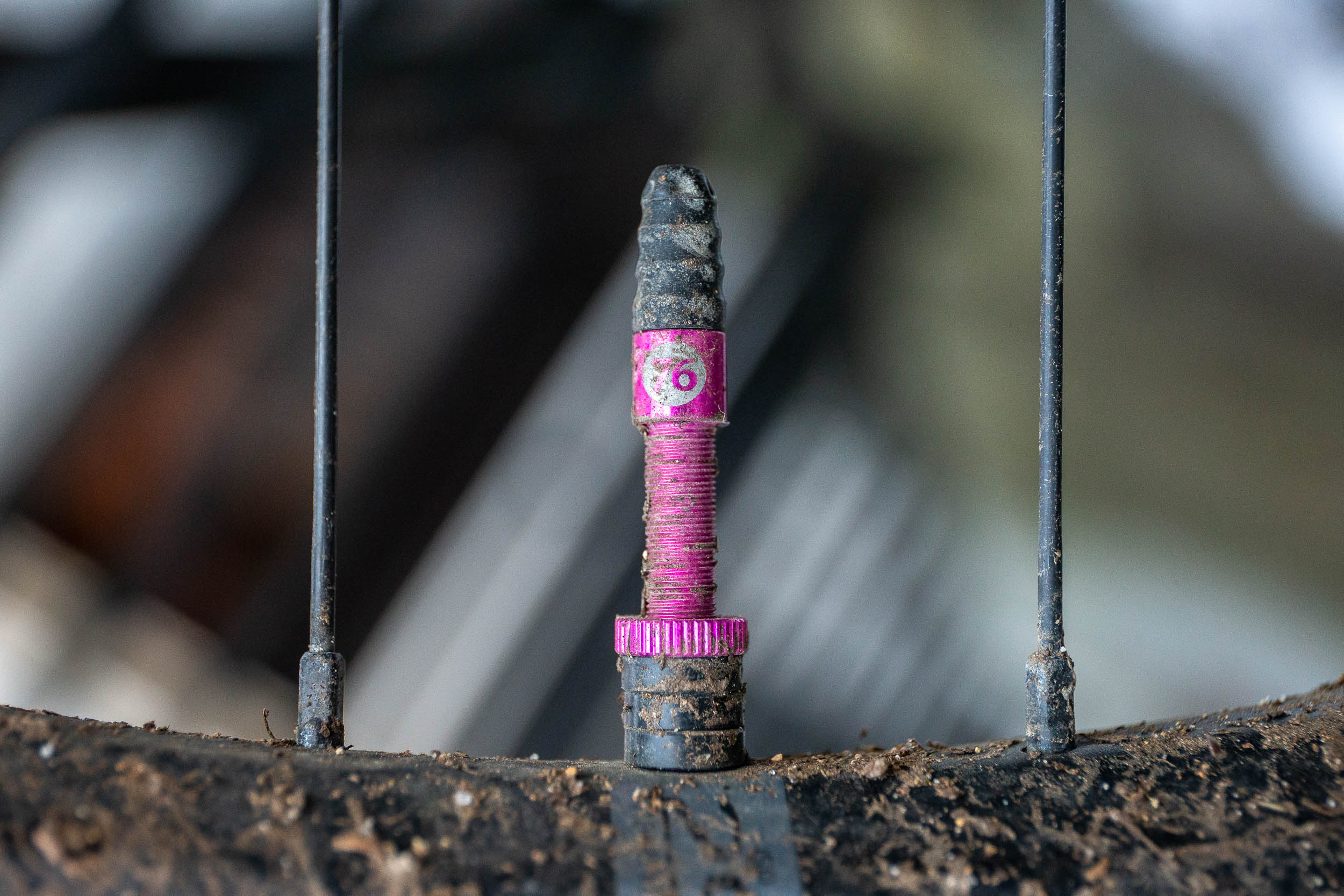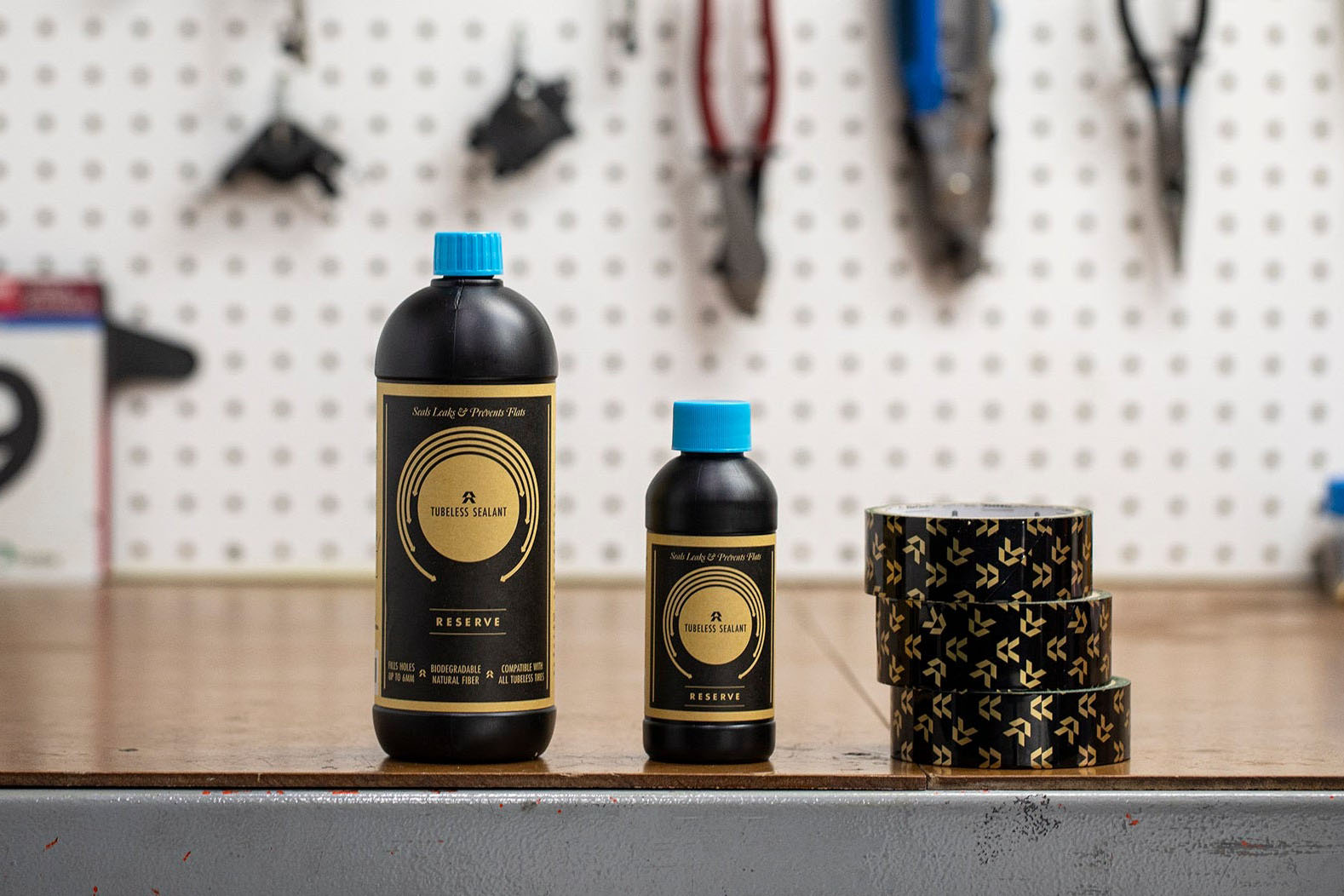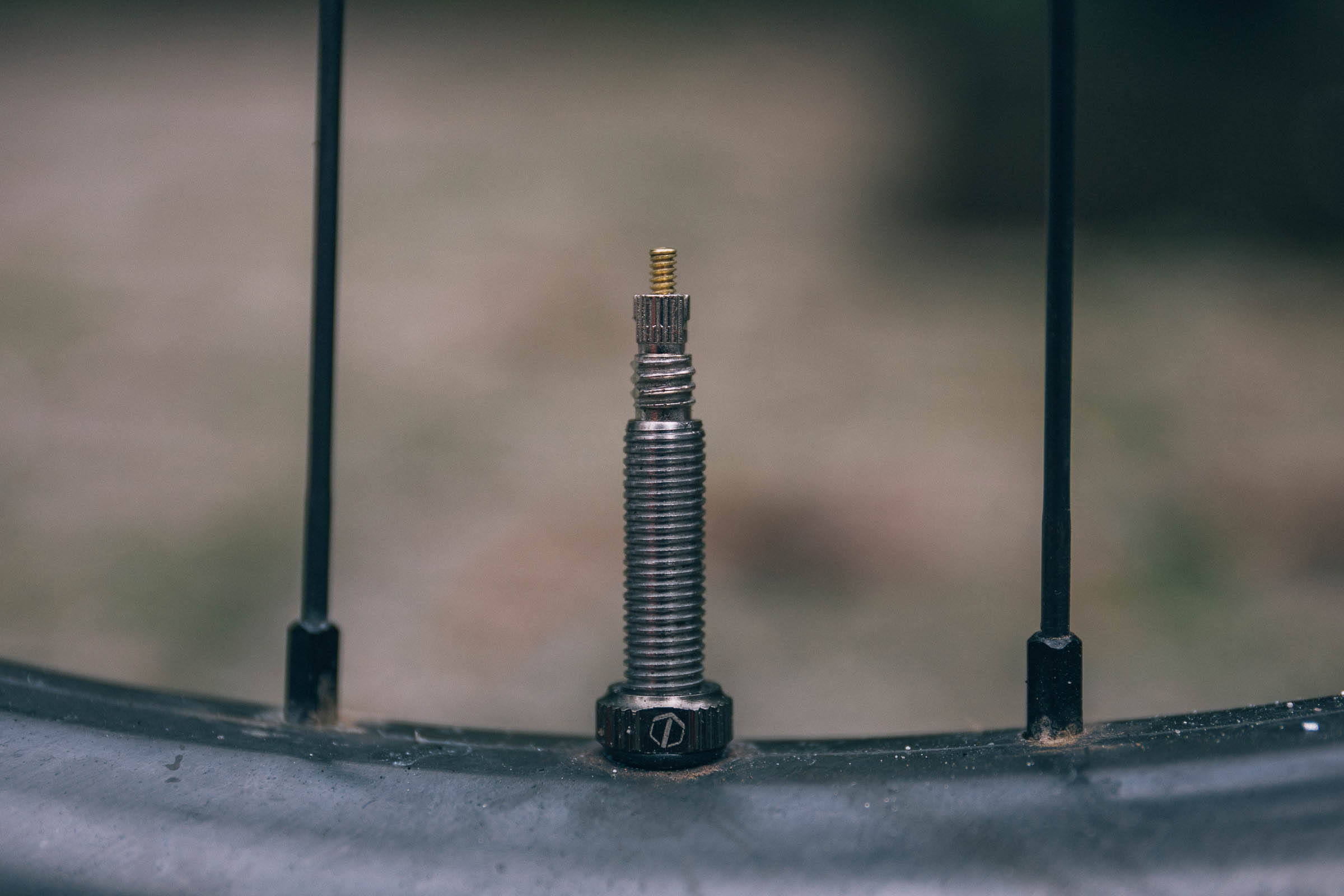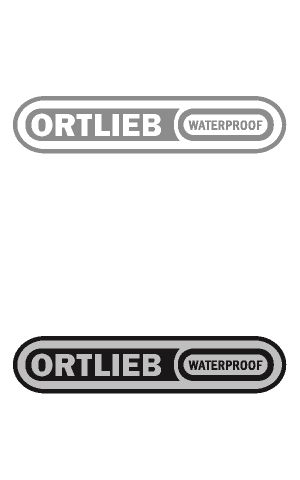Schwalbe Clik Valve Review: Gimmick or Game-Changer?
The Schwalbe Clik Valve is a new tubeless valve and pump system that uses an intuitive engagement system rather than relying on levers and thread-on parts. Is this an industry-disrupting gadget or just another marketing trick? Read Miles’ Schwalbe Clik Valve review to find out…
PUBLISHED Mar 6, 2025
Over the last few years, several brands have released their version of the Presta tubeless valve, promising larger-than-life performance upgrades—Increase airflow! Never clog again! Replaceable parts!. In 2020, Lindarets released its Titanium Tubeless Valve Stems, which were said to be four times stronger than alloy valves. A few years later, 76 Projects and Reserve Wheels focused on the valve core to increase flow rate and decrease sealant clogging. In a highly scientific controlled lab test, we determined that the Fillmore Valves from Reserve Wheels offered best-in-class airflow.
Increased airflow does reduce the chance of sealant clogging, but no solutions have addressed how pumps interact with the valve’s exterior. Thread-on pumps are the most secure but can be awkward and sometimes unthread your valve core. Lever-style pump heads eventually wear out and struggle to stay put without replacing O-rings and other small parts. Schwalbe, a brand partner with Clik Corp, saw this as an opportunity to innovate and introduced the Clik Valve last summer as yet another take on the tubeless valve. This time, however, it promised a valve and pump combination that clicks together without levers or threads, less air loss, and 50 percent more airflow than traditional Presta valves.
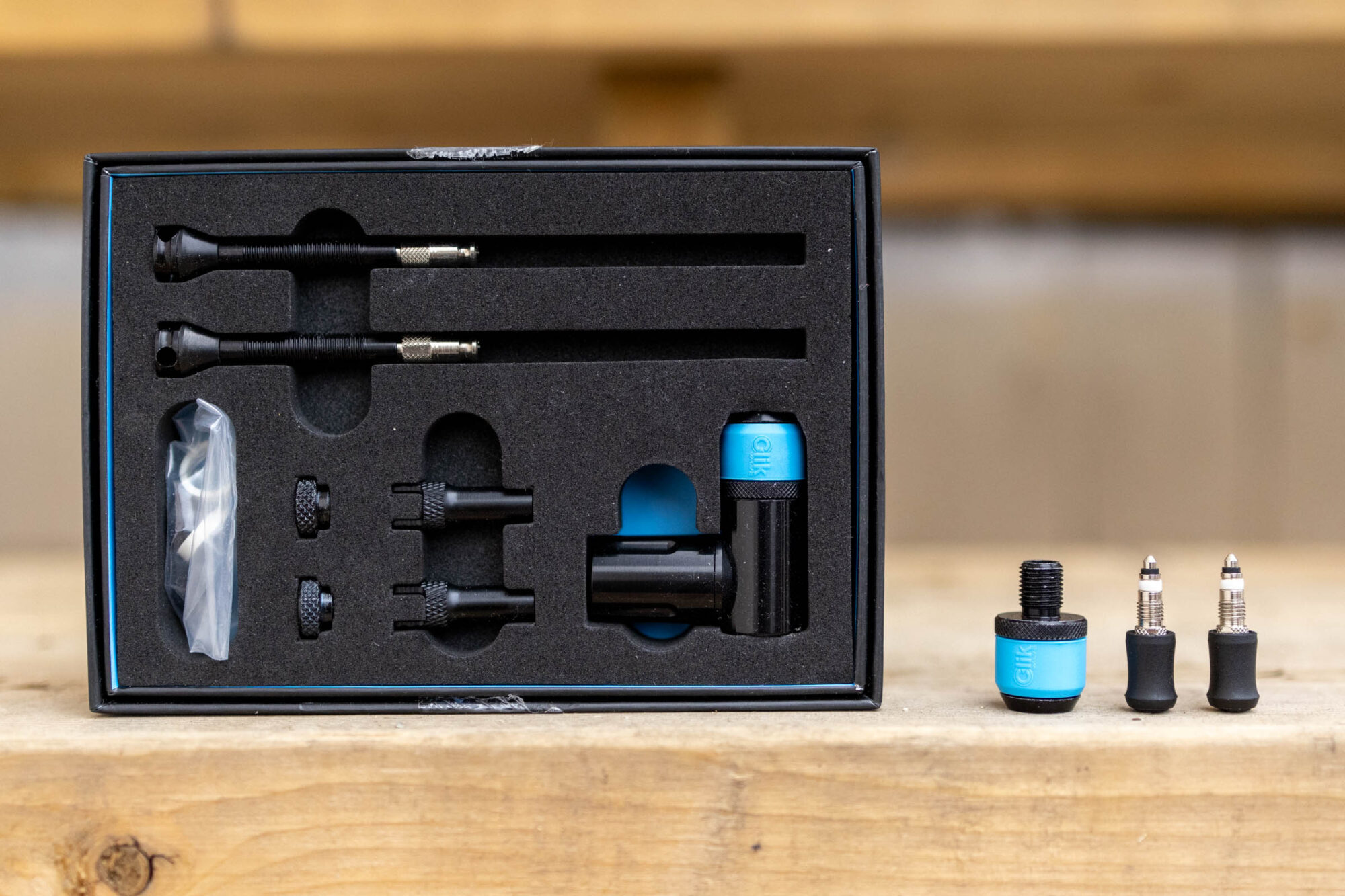
A Closer Look at the Clik Valve
The Schwalbe Clik Valve (SCV for short) is an entirely new tubeless valve and pump system that uses an intuitive click system rather than relying on levers and thread-on parts. Unlike standard Presta and Schrader valves, the Clik Valve and matching pump head are said to snap together with little effort and remove just as quickly. As someone who has struggled with various hand and floor pump designs, I found the idea of a click-on pump and valve quite appealing.
While you must have both the Clik Valve and pump head to take full advantage of the system, any standard Presta or Schrader pump will work on the Clik Valve. The pump head is available in two configurations: the Clik Pump Head Adapter and the 2-in-1 Right Angled Pump Head & Removable Adapter. The Pump Head Adapter can be used on a standard AV/Schrader floor or hand pump simply by pressing the adapter into the existing pump head and locking it in place. Unfortunately, the adapter doesn’t work on Presta-only hand pumps, and not all Presta-only pumps will work on the Clik valve. Schwalbe let me know that they’re working on an adapter to bridge that gap and a list of brands that will start producing Clik-compatible pumps, tubes, and other items.
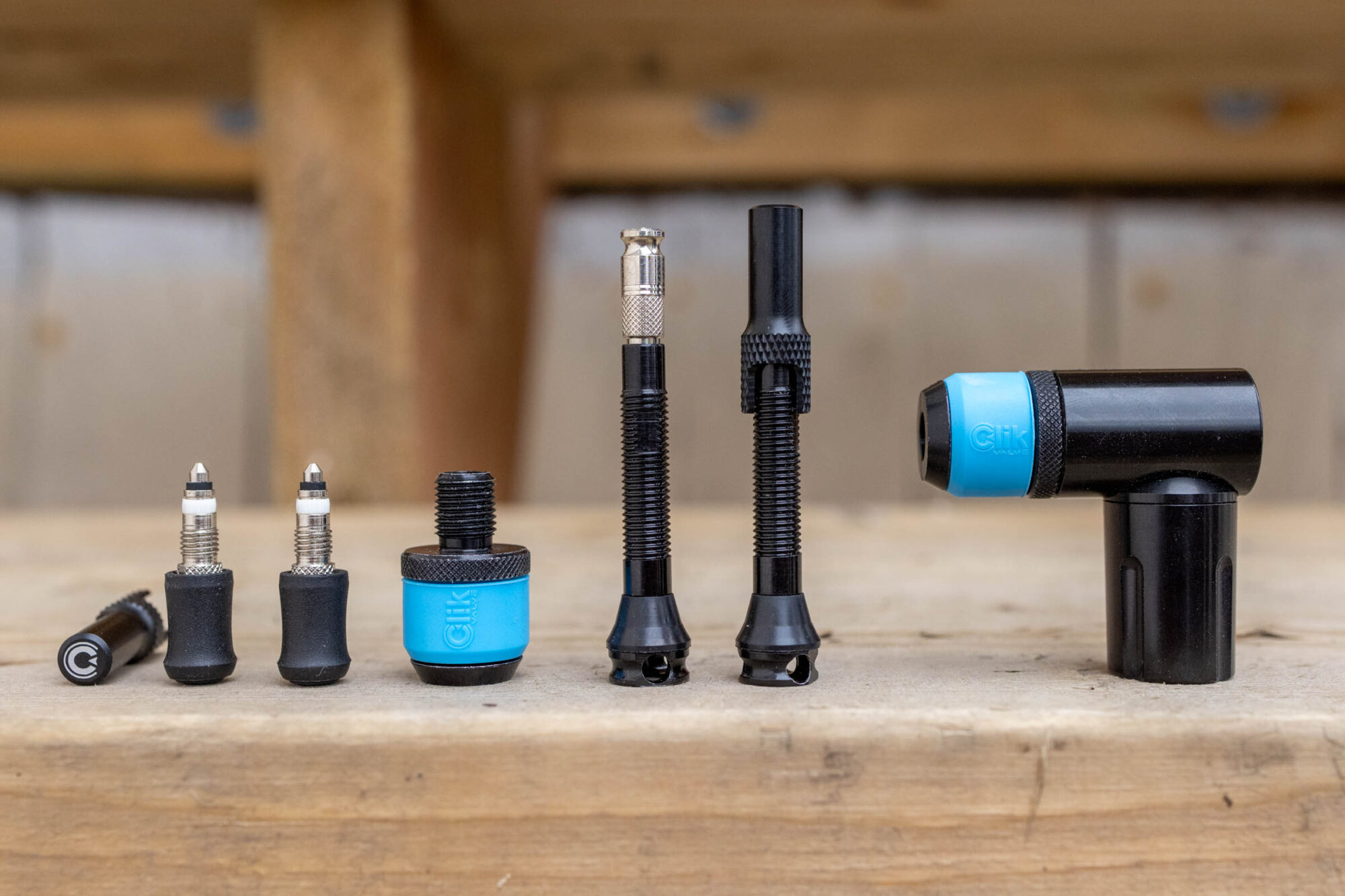
The 2-in-1 adapter is a more permanent solution for floor pumps, requiring the pump head to be removed completely from its rubber hose and the new Clik Right Angled Pump Head installed. The kit includes an aluminum threaded sleeve that holds the tube inside the new head and two sizes of ferrules to ensure an airtight connection. I used this adapter to convert one of my Topeak digital floor pumps to the Schwalbe CLIK Valve system, and as long as your pump has a rubber hose connected to its head, I can’t imagine why it wouldn’t be compatible with the kit.
The Clik Valve pump head reminds me of an air chuck valve used with compressed air tools, but instead of spring-loaded internals, the Clik Valve pump head has minimal moving internals aside from a few ball bearings that the quick-connect to lock onto the valve. Schwalbe cycle tested several pump heads on Clik cores over 20,000 times (same core and head) with no signs of leaks, and they could likely have made another 20,000 connections without issue. According to Schwalbe, this far exceeds the usable life of a standard Presta or Schrader pump head. Unlike other valves, the Clik Valve pump head has no seals. The O-ring, which makes the seal with the head, is inside the valve core itself.
The Clik Valve takes design cues from both Presta and Schrader valves. It has the same exterior and interior diameter as a Presta valve, but the valve core itself uses a similar design as a Schrader valve, where the pump head opens an interior poppet valve inside the core. The poppet valve extends slightly above the valve core’s body, just far enough to let out air with the tip of your finger. The tip of the core tapers inward, allowing the pump head to lock into place without levers or threads.
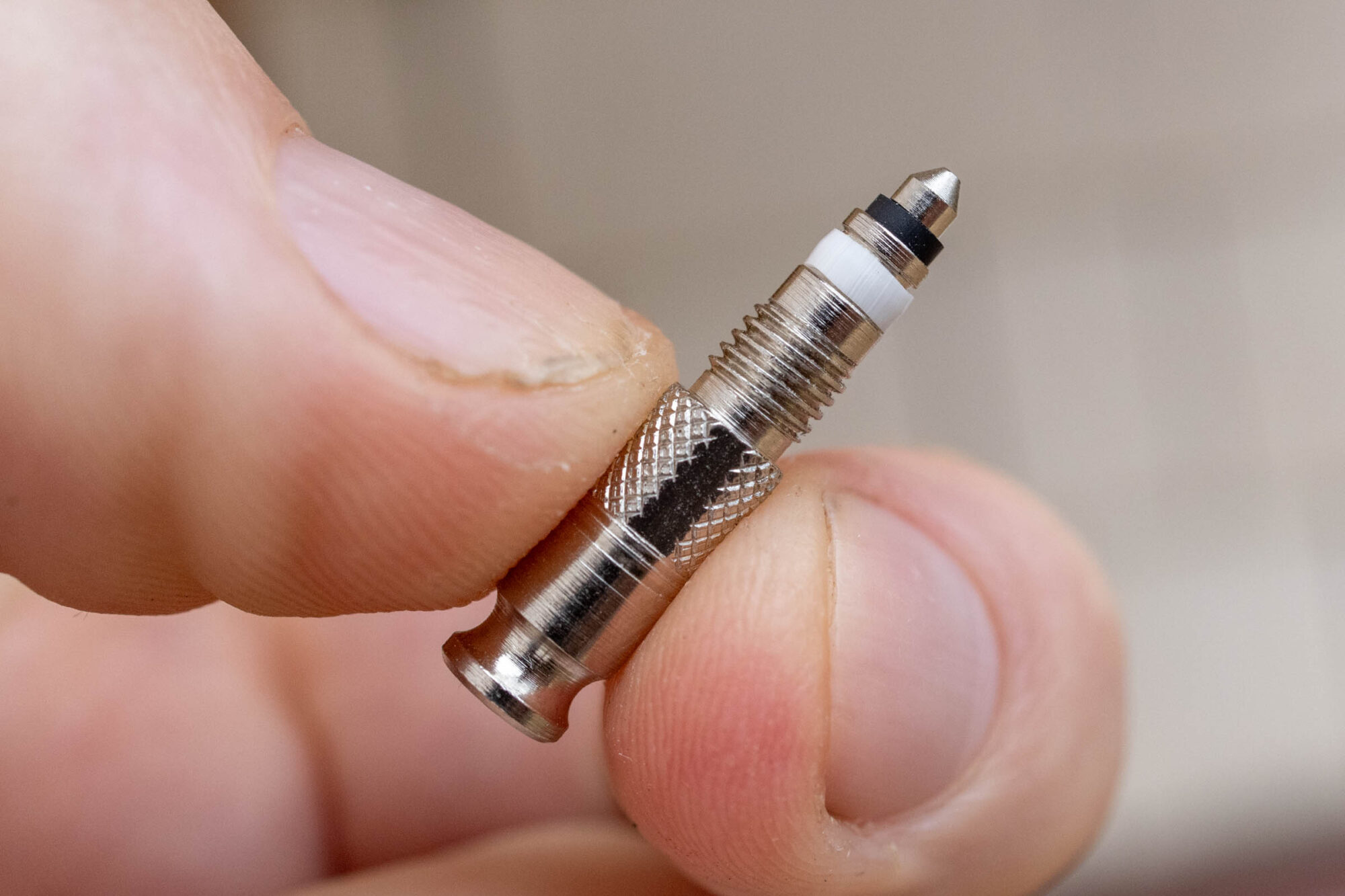
There are adapters available that allow you to convert your current Presta or Schrader valves to the Clik system, which either replaces the standard Presta valve core or threads directly on top of the Schrader valve. For folks running tubeless setups, they also offer complete tubeless kits that come with valves and cores for a complete kit. The valve body is similar to most modern aluminum options. It has replaceable inner seals, machined air holes out the side of its base for those running tire inserts, and the included aluminum thread-on dust caps double as core removal tools. They look most similar to Hope’s tubeless valves. Currently, there’s a standard kit ($28 USD) that includes a pair of valves and dust covers in your choice of valve length (40-100mm), as well as a premium version ($46 USD) that includes the Pump Head Kit.
For those using CO2 inflators, the push/thread-on adapter also works with thread-on and push-on-style inflators. They recommend pairing it with a thread-on inflator with optimum performance, but push-on inflators can also be used directly onto the Clik valve if you don’t have an adapter on hand.
Push On, Pull Off
Whether using the right-angled or push-on adapter, pumping air into your tires is the same easy process. It’s simply a matter of pushing the pump head directly onto the valve, which slides in about a 1/4″ before a satisfying click lets you know it’s locked in place. With the pump head in position, it feels far more secure than any push-on or lever-style pump head I’ve used, which eventually find their way loose and fall off if you’re not careful.
Another benefit of the nearly instantaneous engagement of pump to valve is how little air is lost. After some testing, I experienced only about 0.1 PSI of air loss each time I engaged the pump and because of the valve design. There’s no air loss when removing the pump, ensuring your tire pressure is in fact what you want it to be. I can’t say I’ve had the same experience installing and removing pumps on Presta valves with their exposed top nut and valve.

Unlike a Presta valve, which requires the top nut to be loosened in order to add or remove air, the Clik Valve uses a spring-loaded poppet valve, similar to a Schrader valve. When the pump head is installed, it depresses the valve and opens for inflation or deflation. Like a Schrader valve, the poppet extends slightly above the valve core body just enough to use the tip of your finger to let air out. It works, but it’s slower and slightly more awkward feeling compared to a standard Presta valve, and not nearly as nice as the Reserve valve system, which uses the top cap to depress the valve.
Although the valve body has a larger interior diameter than a normal Presta valve, the Clik Valve Core’s base (inside the valve) isn’t as big as you might expect considering Schwalbe’s claims of increased air flow. It’s only a few millimeters wide, which is visually much smaller than the Fillmore, a system that has proven to be impossible to clog with sealant after almost a year of use. The bottom of the Clik Valve’s core is almost identical to a standard Presta valve, so I’m not convinced it will clog any less than a standard tubeless setup. Still, I have yet to have any issues after a few months of riding. Thankfully, replacement cores are available for $12/pair.
In The Hands of the Youth
When I first moved out west from Ontario, I worked at a kids camp running the mountain bike program and tried to work some basic bicycle safety checks/maintenance into each session. This included checking the chain for lube, ensuring the quick-release axles were tight, and giving the tires a squeeze and inflating if necessary. What I remember most is how challenging it was to teach kids to use floor pumps, which were constantly disconnecting from the tube valve and usually letting out more air than was going in.
My first thought after clicking the Clik valve on and off for the first time was, “Damn, this seems like a game-changer for kids!” Considering many adults don’t know how to use a bicycle pump on a Presta valve, the thought of simplifying the process for everyone was exciting. To put my theory to test, I enlisted the help of my friend Charlie and his 2.5-year-old daughter, Meroë. I was nervous Meroë wouldn’t have the strength to push the pump head onto the valve, but both Charlie and I were blown away when she easily attached the pump (after a short demo) and proceeded to pump air into the tire.
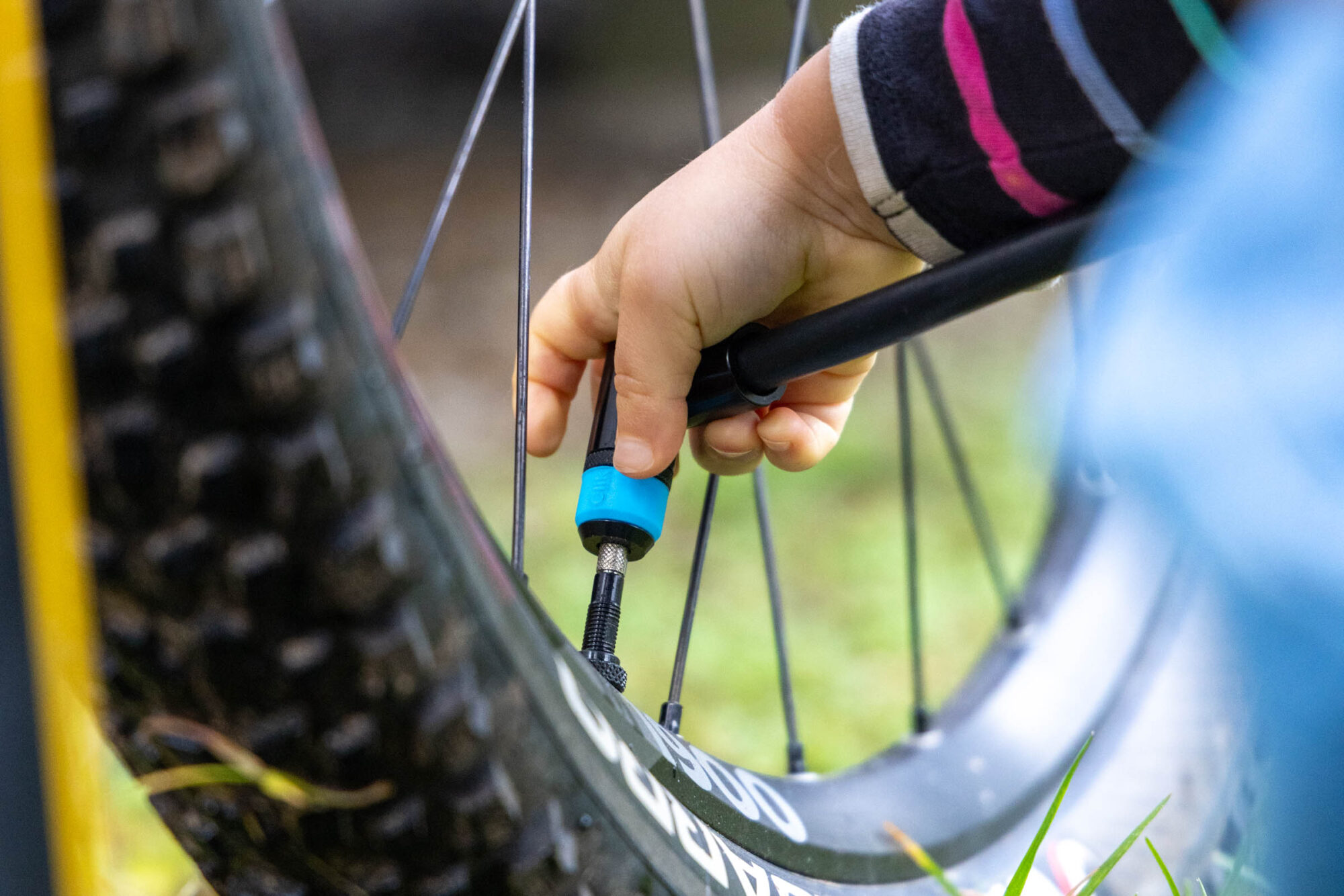
Pumping up a tire might not seem like a hurdle, but I see it as one of the easiest ways for newer riders to feel empowered, and if there’s a way to really simplify that process, then I’m all for it. Personally, I’d love to see Clik valves become the new standard for all bicycles, although I know that’s unlikely.
Pros
- The pump head and valve integration is so easy to use, your 2.5-year-old can figure it out!
- Backward-compatible with many pumps, but not Presta-only ones
- Adapters for Presta and Schrader valves and complete tubeless valve kits
- Easy to convert your floor pump or hand pump to work with Clik Valves
- Clik Valves and standard Presta valve cores are interchangeable, because the body is almost identical
- Minimal air loss when attaching pump
Cons
- Not all Presta-only pumps work on the Clik Valve
- Letting air out with your finger isn’t as easy or fast as a standard Presta valve
- The ideal scenario requires all bikes/valves to be converted to Clik Valve
- Relatively narrow valve core opening won’t reduce clogging
- Material: Aluminum/Rubber
- Weight: 5 grams/each (tubeless valve set)
- Weight: 1 gram/each (valve core only)
- Place of Manufacture: Taiwan/Italy
- Price: $28 USD (tubeless valve set)
- Price: $46 USD (premium valve set and pump head kit)
- Manufacturer’s Details: ClikValve.com
Wrap Up
There’s nothing wrong with Schrader or Presta valves, and we’ve all gotten by just fine with standard versions for tubeless setups for decades, but that doesn’t mean there’s no room for innovation. The Schwalbe Clik Valve system is easily the most innovative valve and pump product I’ve ever tried, and I’ve tested my fair share of fancy high-flow tubeless valves. I appreciate how the Clik Valve system is mostly backward compatible, the fact that there are valve adapters for multiple valve types, and just how easy it is to engage and disengage the pump head. Heck, even Meroë had no problem with it and she’s not even three years old.
The only real hangup for me is that to make it worthwhile, I feel like I need to convert all my bikes to the Clik Valve system. And, because most of my hand pumps aren’t compatible with the pump adapter, I’d have to purchase a few new hand pumps. I’m looking forward to seeing which brands will be developing products around this system, because a nice Clik Valve hand pump for mountain bikes would probably convince me to switch all of my bikes over.
Further Reading
Make sure to dig into these related articles for more info...
Please keep the conversation civil, constructive, and inclusive, or your comment will be removed.











